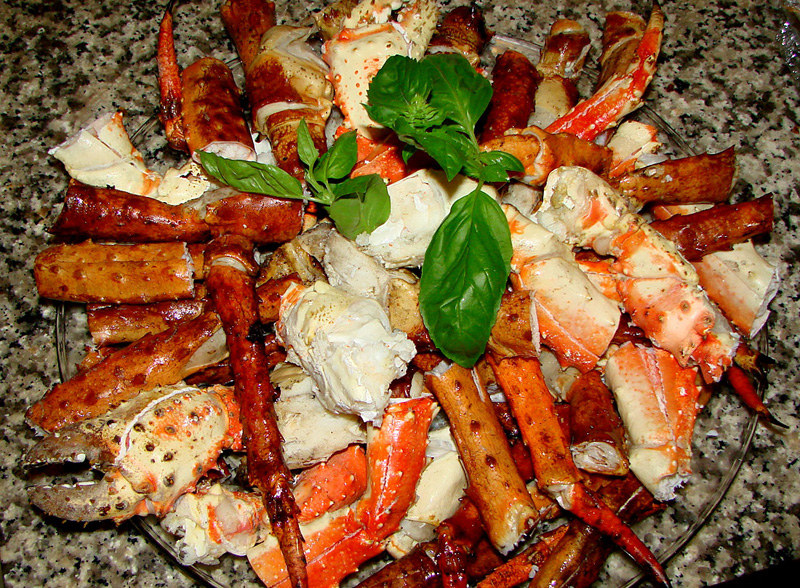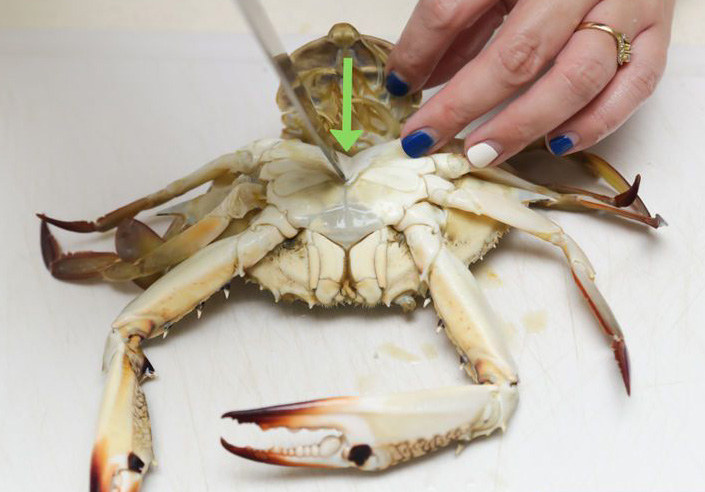
Most Wonderful Time of the Year

No, not Christmas. We’re talking about crab season! With the Dungeness season in full swing, recreational crabbers might be surprised to learn that the tried-and-true method of dumping live crabs in a pot of boiling water is not the preferred method of dispatching those delectable crustaceans. There’s kinder and slightly less disgusting way is to kill and clean the crab prior to cooking.
Warning: If you have a squeamish stomach, read no further.
The technique — known as spiking — is simple, if significantly more hands-on than the old method. The only tools you need are gloves, a large knife and a bucket of water. Simply flip the live crab on its back, stick the point of the knife in the shallow depression just behind its mouth area and quickly cut it down the middle, head to tail. The crab will die almost instantly.
Gather both sets of legs in your hands and push them together, which will break the underside shell along the cut line. The legs and body meat come away together, leaving you with a shell full of guts and goo which you can throw away. Rinse the remaining goo from the meat in the bucket of water, removing the feather-like gills, and you’re ready to cook!

Much debate exists over the best cooking method: Boiling or steaming. We prefer steaming because 1) it uses less water, 2) the legs don’t get waterlogged, and most importantly, 3) the meat has better flavor. Either method generally requires about 10-15 minutes of cooking before you can get to cracking.
You’re probably wondering why this method is ‘preferred’. First, humane societies around the world recommend spiking for the slaughter of crabs because it cuts the nerve centers quickly, minimizing suffering. Live-boiling or microwaving, immersing in fresh water, or pulling the shell off while the crab is alive are all considered inhumane killing methods.
Secondly, there’s a reason restaurants give you a bib when you order a whole crab. Eating them is really messy! You’ll still want to lay down a tablecloth when using my technique, but you won’t need a shower afterward.
PHOTO
Lastly, and to some most importantly, the meat tastes better. We can’t think of another animal that Westerners eat after cooking it in its own innards (oysters not withstanding). Those guts lend a slightly bitter flavor to the meat, and can potentially be toxic if the crab’s hepatopancreas — a delicacy also known as ‘crab butter’ — carries high levels of PCBs or toxins that lead to paralytic shellfish poisoning. In fact, California Fish and Wildlife officials warn not to eat any part of the innards due to currently elevated levels of domoic acid, a naturally occurring neurotoxin.
Now that you have the knowledge, it’s time to celebrate the season with a table full of Dunnies!
Humboldt Baykeeper offers a free PDF detailing the process. Also see the Department of Fish and Wildlife’s Crab Regulations and Info here.
